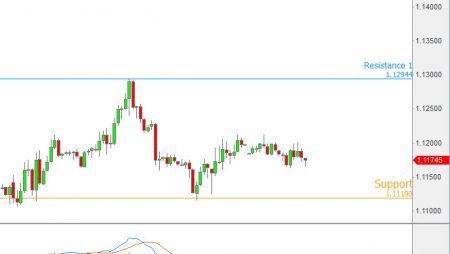Grid Strategy
Grid strategies are common alternatives for traders that do not have an opinion on market direction. They are almost exclusively associated with forex trading. I’ve never seen grid trades in any other context.
The goal of a grid strategy is to outline a ranging or trending bias without committing to the underlying direction. That may sound confusing.
The goal is to only summarize the type of market. Trending conditions prevail in today’s market. If a trader did not know the future direction of the price, he might place stop entry orders a certain distance away from the current market. If the market happens to increase 10 pips, then perhaps that triggers a buy stop order on the expectation of a continuation. Another 10 pips later, another buy order triggers, and so on. The goal is to keep stacking orders on one way moves.
Ranging grids work on the opposite assumption. They use a limit entry instead of a stop entry order. The grid assumes that if the price drifts very far, then it’s likely to come back to where it started.
Problems with Grid Strategies
Position sizing and money management are always some of the biggest concerns with an expert advisor. Two of the more common approaches that I see in grids are either to use a fixed lot size or to use a Martingale approach.
I see merit in the idea of varying lot sizes at different levels. Martingale, however, takes it way too far. It’s a mathematical fact that it will blow up at some point in time. A more reasonable approach is to increase at a very slow rate like 10% as trades become increasingly likely to exit. If a trade is decreasingly likely to exit, the idea of not trading should come to mind. Alternatively, trading smaller sizes is always an option.
The other problem is that grids only work at the moment in time where it’s applied. When a ranging grid expert advisor is placed at the top of a range, the grid will correctly anticipate the market conditions but poorly implement the prediction. The top of the range means that the price falls back down into the middle. The grid, however, assumes it was placed in the middle. The grid buys as the price falls into the mid-range on the errant expectation that it will return to the top of the range.
This is precisely what I dislike about grids. They are totally blind to the context of their current placement. They are best used, in my opinion, in the context of slight directional bias but where outright trades may not make sense.


